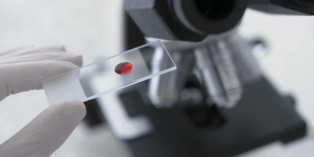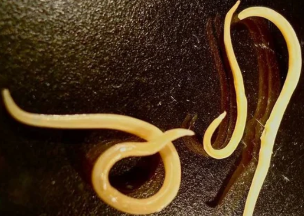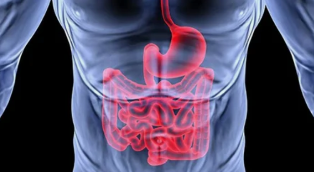Prior to the start of treatment for the parasites, it is important to determine which type is present in the body. It is necessary to find effective methods of treatment for the majority of the drugs that are specifically designed to get rid of a specific type of helminthes.

They are worms, protozoa
At times you may hear the phrase that the patient is infected with a protozoa, for a worm. It is important to understand that the most simple is the solely single-cell micro-organisms, and, in one case, the very organization of the colony. But they are never multicellular, such as infestation by insects and helminths.
The simplest of all the processes that take place within cells, the cytoplasm and the nuclei of the cell, whereas for the anatomical organization, it is much more difficult: they have to distinguish them from the bodies that perform special physiological functions. Therefore, to rely for the most simple, is fundamentally wrong.
Sometimes the worms are so-called protozoan parasites in comparison to insects: bed bugs, lice, t., as well as the latter are much higher on the evolutionary ladder. In this interpretation, the name of the not-for-steps-of-animals.
- Symptoms, treatment, and prevention of sarcocystosis in human beings.
- There are maggots of the black man.
- How are the eggs of intestinal worms.
The parasites, the most common
The most common endoparasites include, certainly, helminths (worms), which, according to several sources, contaminated by more than 80% of the world's population.
A large number of these parasites, it is divided into the main types:
- hookworm – worm parasites (roundworm, pinworms Trichinella the genus meloidogyne, and Dr);
- cestodes – flatworms-ribbon (lantecy, pork, beef tapeworm, tapeworm, and Dr);
- trematodes – worms-flukes (liver, blood cells, lungs, as well as in the worms, the microbes in the gut).
Sometimes, you may find that the more general the classification, according to which all types of parasites, and that the people are divided as follows:
- PRosvetnik (gut), to infest in the intestine;
- the tissue is located in other organs and tissues.
Let's look at a brief overview of the most common types of helminths.
Roundworms (ancilostomídeos)
- Of the roundworm – the most common of the roundworms in length from 20 to 40 cm), parasitic in the small intestine, but it is the pre-migrates in the human body, and capturing the circulatory and the respiratory system. Along with the bowel of parasites, it may experience in the liver and the gall bladder, the heart and the lungs. A frequent symptom of the million with ascaris – response in the event of an allergic reaction.
- Pinworms – small worms, up to about 1 cm, which affects the intestine and cause enterobiasis disorder of the work of the digestive system, exhaustion, sleep disorders, and Dr. the Feature of the presence of the vermin – itch in the region of the anus, where they lay their eggs in it.
- Trichinella – the worms are "microscopic" (it is only a few millimeters), leading to a high disease – trichinosis, which can, if not treated, lead to death. For the adults, the kinds that dwell in the body of the people in that muscle (breathing, facial, and Dr), thus causing muscle aches, fever, swelling, skin rash, itching allergic.
- Trichuris – small worms, the length of up to 4.5 cm long, with the anterior part of the body
on the way to the end), the larvae of which cause a trihozefalez, diarrhea, acute abdominal pain, and other symptoms of approaching appendicitis. Due to the toxicity of the body develops anemia.
The tape-worms (cestodes)
- In a large, cosmopolitan, the length of the body, which can be as high as 10 m, which leads to the development of the difillobotrioz such as nausea, weakness, vomiting, unstable chair, asthenia, and anemia.
- The pork tapeworm has a length of from 3 to 8 m, which infects mainly in the small intestine, and immediately calls for the two-disease: taeniasis with the dyspeptic, asthenic-neurotic and abdominal pain syndromes, and for the cysticercosis poisoning, intestinal, allergies, and respiratory conditions. Depending on the location of the tsistitserki are affected, the muscles, the brain, the heart, the eye, and the Dr.
- High the tapeworm whose length may reach up to 18 m, which is called the beef tapeworm, infection, and is considered to be one of the most dangerous types of intestinal worms. If you do not do this plus, they are able to live in a human body before they are 18 to 20 years old. It is located around the gut, leads to a strong poisoning of your life, as well as diarrhoea, nausea, vomiting, abdominal pain, anemia, allergic reactions, and problems with the nervous system.
- A dwarf tapeworm and the length is from 1.5-5 cm, the gimenolepidoz with patients, armbar, and asthenic-neurotic syndrome, who have, above all, the digestive tract and the nervous system of the body, as well as in the liver.
- Echinococcus is considered to be the finest tape for the end-to-end – its length is only 2.5 to 8, rarely 9-mm, however, the infection is that they have terrible consequences in the form of lesions on the liver and the lung, where they form cysts, and tumors, which is caused by the dysfunction of these organs.
Worms-flukes (trematodes)
- The liver Fluke or the liver fluke a manner similar to a leaf length of about 30 to 50 mm, and a width of 8-13 mm, and has a " sucker." It disrupts the shell of the liver and is blocking the bile ducts, is able to overlap fully the exit the bile. It can lead to cirrhosis, jaundice and cancer of the liver.
- Cat's - (a) a Fluke, or a cat flounder, smooth, end-to-end length of 4-13 mm in diameter. Location of the duct from the gall-bladder, liver, and pancreas. Called opisthorchiasis, with the development of gastritis, ulcers, pancreatitis, cholecystitis, to the cancer of the liver, which can be life-threatening.
- Embolism of The Fluke has a egg-shaped form, with red-brown body with a small peak to the length of 7.5 to 12 mm, and a width of 4 to 8 mm in diameter. It affects the lungs by causing inflammation, exudative pleural effusion, focal fibrosis, and lung cancer. Upon entering the brain it can cause encephalitis, and meningoencephalitis.
- Schistosoma (blood flukes) – dioecious worms to a size of 1-2 cm, it is the eggs that cause an increase in the liver, spleen, and lymph nodes, and the formation of polyps in the bowel, diarrhea, inflammation, granulomatous, leading to cancer of the bladder.
The diseases that they cause
The most dangerous parasites that live in the human body, and can cause a variety of diseases. Many a times, the disease PRemotinoally specific to the parasite bears the same name as him. As well, there are different types of parasites in the human body, it can cause the following diseases:
- some parasites, on man the internet will promote the trematode;
- the cestodosis occurs when the defeat of a tape worm;
- if you are an adult or a child, the intestines are roundworms, and the diagnose of the nematodes;
- to give up cause hirudins;
- Arctocephalus cause skrebni.
However, the parasite in the body of a man may be injured is not an authority at all. Depending on the location of the parasite in the human body and include such diseases of poverty:
- When, on the defeat of the eye may occur, onchocerciasis, demodicosis, cysticercosis, and myiasis;
- The disease of the organs of the digestive system, causing parasitic single-celled, and helminthes, – ascaris, trichinosis, ancylostomiasis, enterobiasis, intestinal, the myiasis, and metagonimus;
- Disease of brain, echinococcosis, toxoplasmosis, alveococcosis, and cysticercosis;
- Disease-dermatological – demodicosis, head lice, scabies, too, the pulicosis, trombitas, ftiras;
- The pathology of embolism – echinococcosis, ascariasis, acariasis, alveococcosis, tomingas, Dr.;
- Diseases of the liver – opisthorchiasis, alveococcosis, echinococcosis, your clonorchiasis;
- In the mouth, on the ears, and the mouth of the parasites can cause different types of myiasis;
- The pathology of the heart, dirofilaria, and echinococcosis;
- Diseases of the urogenital system – alveococcosis, urate measy, echinococcosis;
- The pathology of the vascular – filaretos and disease.
Flat helminths
They are parasitic worms or flukes (trematodes) have a characteristic leaf shape of the body. Your structure is very organized and they have digestive, excretory, and nervous system. During the life cycle, ranging from those who own them.
The distribution has these types:
- The siberian ulcer, so common dab (cat fluke), or opistorchis. Most often, the infection occurs through the raw fish, which leads to the onset of the disease — opisthorchiasise. The reproduction of the parasite takes place very rapidly, which can lead to serious consequences. The barrel has a yellow tone, and its length may not exceed 12 of the m. is Protected in the human body, these parasites cause internal bleeding, violation of the bladder outlet and cause dysfunction of the pancreas. The dangerous effects: cholangitis purulent type, ahilii, colangiocarcinomas.
- Of The Liver Fluke. Host, the intermediary is an agent of the beast, and a person becomes infected by eating poorly treated meat from the dead animals. Because of the infection will develop the disease fascioliasis. The size of these worms is relatively small (no more than 5 to 6 cm), but they are only able to lead to dangerous pathologies: liver abscess, cholangitis, hepatitis. Through the blood of the larva of the parasite can be spread all over the body.
- Chistosome. The worm is able to sit up in the blood vessels, draining blood components. As a result of your life-it is possible to develop varicose veins, formation of tumor. The main symptom is intensive, total of intoxication.

In the human body, can detect a variety of worms, parasites, and incapable of fixing itself in some of the internal organs. All of them can cause diseases, which can lead to serious diseases. When the signs of the gelmeGnte of any kind, you should consult with a medical doctor to start your treatment.
The high-cosmopolitan
High, the tapeworm can reach a length of up to 12 m: this Is androgynous, that it can produce more than 100,000 eggs, they will appear with their waste. The eggs fall to the ground, and then on to the plants, the plants cattle eat. In the body of the animal, the eggs become larvae, which are found in the body. If an individual use in your food, contaminated meat, and the maggots will fall into the well. Man for man, the larvae are not passed in.
The adult worms have a head with four suckers, the neck, and the body, and that it is in the thread. The number of segments is constantly on the grow, and mature, the segments may be separated from the worms, and emerges from the belly of the man on the outside.
The high-cosmopolitan
The symptoms of the disease include abdominal pain, nausea, vomiting, dyspeptic disorder, increased salivation, light-headedness, weakness, restlessness, quick to fatigue, and abdominal pain, the location of which is uncertain, allergies, balance the appetite.
To see the high reason for facultative nature of the body, there is a schema, consists of 3 phases: preparation (cleansing of the body), for the treatment of intepretationsUI drug recovery (diet, herbal medicine).
A strip of helminths
The gelmeNTem the belt and / or cestodes, there is a wide variety of are the worms, the length of which may be from 2 mm to 10-12 m. the Body of these parasites, has a specific structure of the various segments of the neck and the head, with the suction cups (or hooks) for mounting on the wall. The cestode, androgynous, and all the eggs are in the proximal joints. The nutrients in the worm sucks up all across the surface of the body.
Include the following types of tape worms:

- Sheets. You are able to lead to cholangitis and abscess and spread to the spleen, the muscles and the brain.
- Apni or tapeworms. The high-tapeworm on the disease, beef tapeworm infection, and is usually in the small intestine. Risk of serious cholecystitis, small bowel obstruction, acute appendicitis. This worm is able to result in consequences: on the atrophy of the bowel, shell, glossitis Gunther, leukopenia.
The protozoan parasite
Toxoplasma gondii (Toxoplazma gondii) – a parasite on the primary host is the cat. They can also be downloaded teplokrovsUI both animals and human beings. The disease, which is caused by The Toxoplasmah called TaxolezmDLRm. On the trail of a disease that's easy, but not for the fetus inside the womb of my mother, at the time of pregnancy, which leads to serious consequences for both the mother and the fetus, or even death.
Amoeba – a simple one-celled organism that is considered to be one of the first beings who have ever lived on the Earth. The disease, which is caused by the soroprevalência of the infection, the so called eUIbeez. An infection of the bowel, mainly ulcerative colitis loss of the large intestine, with the advent of bloody diarrhea, with a possible formation of a secondary intestinal infection in the outbreaks, with the potential for chronic leakage of water.
Malaria PLezmodeth, from simple single-celled creatures, in the development of man, it is out of the master, and the mosquito a permanent one. In the human body, and piggybacking onto the PLezmodeth is presented in 4 types:
- - P. malarie – and four-day malaria;
- P. vivax, the three-day malaria;
- P. ovale — the three days of ovale malaria;
- P. falciparum — a tropical malaria;
The length of the time interval between the peaks is dependent on the type of infectious agent. In addition to all of this, if you develop anemia, as well as the PLezmodeth that affects the blood cells of the red blood cells.
LamBLee it's more simple, pear-shaped, it has two nuclei and four pairs of flagella. The main source is the future of the people. Giardiasis — a disease of the joint, in particular the removal of the liver and the small intestine. The disease can occur both in the light and in a big way.
Trichomonas – the flageladosse single-celled organisms in the form of a pear, a cause of the disease, Trexmonoze, sexually-transmitted, and a surprise mChepalova the system. If you know that they are ill, men and women, but in men with the disease, occurs it is usually without symptoms.
Trepenoseѕ – rod single-cell simple, the flageladossx. They can cause serious illness, trypanosomiasis, mortally dangerous for the human beings that are the disease of the sleep. PeRenoscekom trypanosomes are used, the tsetse fly. On the inside of the body of the host, the parasite multiplies in the skin, then penetrate the lymphatic system and the blood. The majority of pathogens is the spine and the brain, where it destroys the cells and make your products.



























